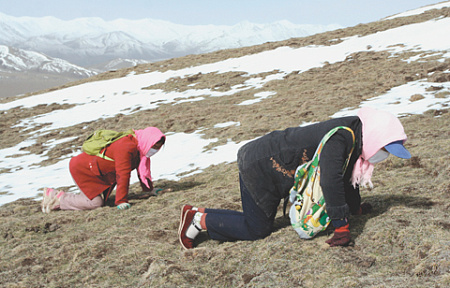
Some people still remember about Filipino medicine, but now it is better known as Tibetan medicine. Although, in my opinion, she did not resort to broad advertising designed for simpletons. None of the Tibetan doctors performed heart surgery with their bare hands, like the Filipino priests in the videos playing on screens all over the world, no one promised medicines for all diseases. But knowledgeable people from the bohemian world (mostly Americans) have long traveled to this remote corner of the earth and returned completely different people. As Kipling wrote, the East is the East, and Tibetan doctors sacredly preserve the traditions of their ancient medicine, which help people of the 21st century.
“Old” and “New” (Tibetan treatises and Indian sources)
Tibetan medicine (it would be more correct to call it Indo-Tibetan medicine) has been known since ancient times and is one of the most interesting and traditional medical systems. But it was only since the 19th century that she became widely known in Europe due to the attention of Oriental scholars, doctors, philologists and other specialists in the East.
In recent years, the so-called idea of “layering” of Tibetan medicine has developed. In other words, scientists claim that the whole range of views, methods of treatment and the use of medicines is closely related to the main stages of the development of Tibetan medicine over several centuries.
The history of the development of this original and ancient healing art is conventionally divided into “old” and “new” schools. The “old” one was based on the experience and treatises of its own doctors, while the “new” one was entirely based on Indian sources that were increasingly penetrating into Tibet.
“Zeytzhar-migzhang” (“The delightful adornment of the eyes”)
One of the most popular treatises of Tibetan medicine is the treatise “Zeytzhar-migzhang”. If you translate its full name from the Tibetan language, it will sound like “an accurate guide for practical medicine or as a mirror of medical science, called “a delightful decoration of the eyes.” The treatise was written in the 19th century by a Mongolian gegen (the title of a clergyman in Lamaism) Zhambaldorzhe, but this is not surprising: since the 13th century, Tibetan medicine has spread widely in Buryatia and Mongolia.
The author divided all types of medicinal raw materials into several groups. To list just a few: firstly, medicines made from minerals and precious stones; secondly, medicines from the earth; thirdly, medicines from trees. Further, the treatise describes in detail all kinds of decoctions, lists medicines from herbaceous plants and from raw materials of animal origin.
Nevertheless, the essay was based on medicinal plants of Mongolia, but we are still directly interested in Tibetan medicine, which we will now turn to.
“Hot” – “cold” (six flavors)
Tibetan doctors defined the medicinal properties of medicines by four components: taste, effect after taking the drug, the effect of each individual remedy on a person, and the total effect after the whole combination.
They distinguished six flavors: sweet, sour, salty, bitter, burning and astringent. It was believed that taste was determined by the five elements – Earth, Fire, Water, Air and Ether.
According to the therapeutic effect, the acute, light, warm, heavy, coarse or hard cooling and hot properties of medicinal plants were distinguished. For example, a short-term effect on the human body was considered light. Hot is the effect that certain medications had at the initial stage of their administration.
In general, in Tibetan medicine, all diseases were divided into two large groups: “hot” and “cold”. It is clear that the so-called “hot” diseases were those based on inflammatory processes. The “cold” ones proceeded without them. But besides these two main groups, there was a third, which included complicated diseases in which one stage of the disease was replaced by another.
How to treat (from cardamom to dandelion)
Mostly all kinds of plants, which, according to Tibetan doctors, possess certain medicinal properties. We will give the names of some plants that grow both in Tibet and are widely found in other parts of the globe (we will indicate the applicable part in parentheses). And let’s repeat: that’s what Tibetan experts think.
Cardamom (fruit) – has intoxicating properties, is used to cure cold diseases of the stomach and spleen.
Raspberries are sweet and bitter, good for lung diseases.
Bluegrass (leaves) – promotes longevity and enhances the physical strength of the human body.
Medicinal dandelion is useful for chronic fever.
Apricot (almond) – sweet taste, promotes hair growth.
Sugar cane – cures indigestion accompanied by fever.
Apple fruits (different types) – reduce peristalsis, remove colic of the small and large intestine.
Styrax benzoin (resin) is a refreshing property, very useful in liver diseases.
Cumin (seed) is a mild, moderate property that cures eye diseases.
Rhubarb officinalis (rhizome) is a refreshing, moderate property that has a laxative effect.
Plantain large (grass) – stops stomach upset.
Consult a doctor
Of course, before you turn to Tibetan, Chinese and other non-traditional methods of treatment, as they say, consult your doctor. With someone you trust.
